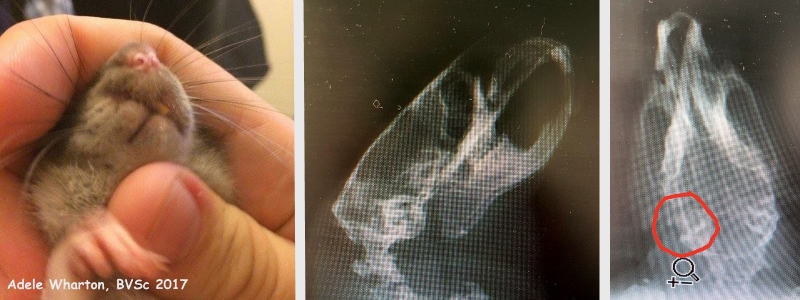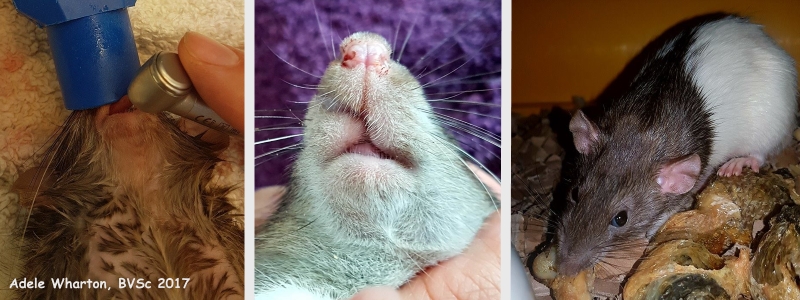Figure 6: Dental burring procedure in 14-week-old male rat with malocclusion. (George)
Case history and photos
History
George is a 14 week old male intact rat, weight 211g.
He came into my care on 06/05/2017, with a history of severe malocclusion
Clinical Signs
George’s incisors were growing sideways, the lowers to the right, the uppers to the left. He did not appear to demonstrate any common congenital jaw abnormality (e.g., an overshot or undershot jaw).
Diagnosis
Malocclusion
Tooth root disease and neoplasia are considered unlikely due to his age. The overgrown teeth has caused soft tissue trauma resulting in scarring to his upper lip.
Treatment
On 07/05/2017 George was neutered, and his incisors were burred to the gumline using a high speed dental drill. Skull radiographs were also taken.
Radiographs taken showed that the lateral view appeared normal, with the molars in normal alignment; however, the dorsoventral view showed an old (healing) fracture to his temporomandibular joint (where the lower jaw joins the skull). This would be most likely due to a fall as a kitten, and had caused his lower jaw to be offset to the right making resolution of his malocclusion highly unlikely.
Outcome
George continues to have his teeth burred at 2 weekly intervals, and as seen in the photos below it’s not holding him back one bit, he can happily eat hard food items, even bones!
George is currently undergoing training to achieve conscious burring, but as he is so young the training sessions are a work in progress.
Photos
|
|
|
|
Case history and photos courtesy of Adele Wharton, BVSc, MRCVS, CertGP (F&L)




